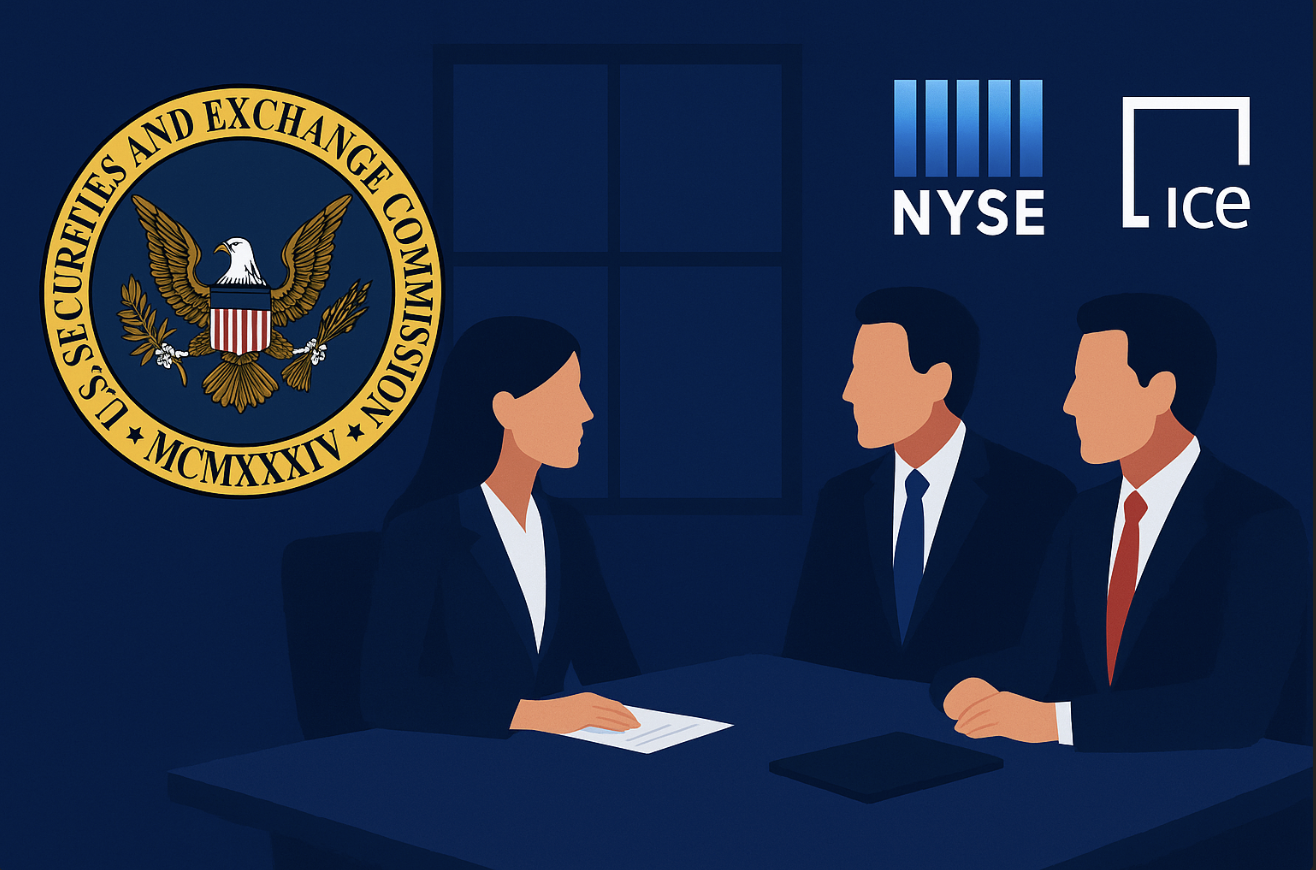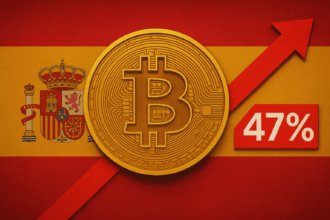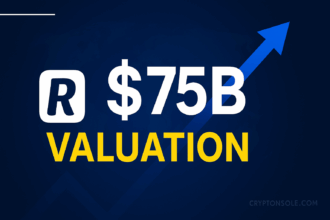Summary
On September 26, 2025, the U.S. Securities and Exchange Commission’s Crypto Task Force held a meeting with senior representatives from the New York Stock Exchange (NYSE) and Intercontinental Exchange (ICE). The discussion covered7 key regulatory challenges in the crypto sector, particularly around crypto derivatives and tokenized equity trading. The meeting reflects the SEC’s increasing engagement with traditional financial market operators on how blockchain innovations may be integrated into regulated capital markets.
What Was on the Agenda
According to a memorandum made public by the SEC, the meeting included the following topics and participants:
- Participants from ICE & NYSE
- Elizabeth King, Global Head1 of Clearing & Chief Regulatory Officer at ICE
- Michael Blaugrund, Vice President of Strategic Initiatives, ICE
- Jon Herrick, Chief Product Officer, NYSE
- Jaime Klima, General Counsel, NYSE
- Primary Discussion Topics
- Crypto Derivatives Regulation
The parties reviewed jurisdictional questions, possible exemptive relief, and ways to facilitate novel derivative products under the existing SEC/CFTC framework. - Tokenized Equities & Trading Structures
They examined legal and regulatory considerations for tokenized stocks, models for trading, and how to enable implementation of new structures for securities on-chain. - Definition of an Exchange “Facility”
The meeting addressed how expanding the notion of “facility” may affect tokenization platforms and whether token trading venues fall under exchange regulation. - Investor Protection & Issuer Interests
Consideration was given to balancing innovation with protections for all market participants—ensuring fair access, auditability, clarity of rules, and avoiding regulatory arbitrage.
- Crypto Derivatives Regulation
Why This Matters
- Bridging TradFi & DeFi
The meeting signals that traditional exchanges and regulators are actively exploring how to overlay blockchain and crypto technology on current market infrastructures — e.g. enabling tokenized3 stocks, hybrid trading systems, and regulated derivatives. - Regulatory Clarity Is Key
Many market participants have long called for clarity on whether, how, and under what conditions crypto derivatives and tokenized securities could operate under U.S. securities laws. This joint engagement is a step toward addressing those uncertainties. - Power of Major Players
By involving NYSE and ICE — two of the largest exchange operators in the U.S. — the SEC is signaling that future crypto regulation must align or integrate with existing capital markets infrastructure rather than remain siloed. - Tokenization as a Frontier
Tokenized equities represent a potentially transformative shift in how shares, funds, and securities are issued, traded, and settled. But they raise thorny issues: how to enforce shareholder rights, how to manage corporate governance, how to reconcile blockchain structure with securities laws, and how to protect investors.
Challenges & Open Questions
- Legal & Structural Boundaries
How exactly tokenized equities will fit into existing regulations, whether as securities, derivative instruments, or some hybrid model, remains unresolved. The meaning of exchange “facility” may need reinterpretation in the crypto era. - Exemptions & Relief Process
Many tokenized models may require SEC exemptive relief (no-action letters or rule changes) because existing rules don’t neatly cover blockchain setups. Whether the SEC will grant such relief, and on what terms, is uncertain. - Interagency Coordination
Crypto derivatives often fall under both the SEC and CFTC. The meeting discussed overlaps and gaps, but further interagency coordination will be critical to avoid conflicting regimes. - Operational, Custody, & Audit Risks
Implementing token trading, custody of tokenized3 equities, chain settlement, auditing of on-chain assets, and managing security risk are all significant technical and operational hurdles. - Innovation vs Protection Tradeoff
Regulators must carefully calibrate rules to avoid stifling innovation while protecting retail investors, preserving market integrity, and preventing misconduct.
What to Monitor Next
- Follow-up Regulatory Actions
Watch for SEC rule proposals, public comment periods, or exemptive relief frameworks targeted at tokenized securities or crypto derivatives. - Statements / White Papers from NYSE & ICE
These exchanges may publish plans or pilot programs relating to tokenized asset trading or hybrid trading systems. - Industry Feedback & Advocacy
Comments from exchanges, brokerages, asset managers, and crypto firms will shape how rules evolve. For example, a16z and others have already submitted public comments to the Task Force on tokenization. - New Listings / Pilot Launches
Any early tokenized equity or crypto derivative products that seek SEC or exchange permission — which will serve as proof points. - Regulators’ Public Messaging
How the SEC frames its approach publicly (e.g. via speeches, guidance) will influence market expectations and design choices.
KB9CFPPH












